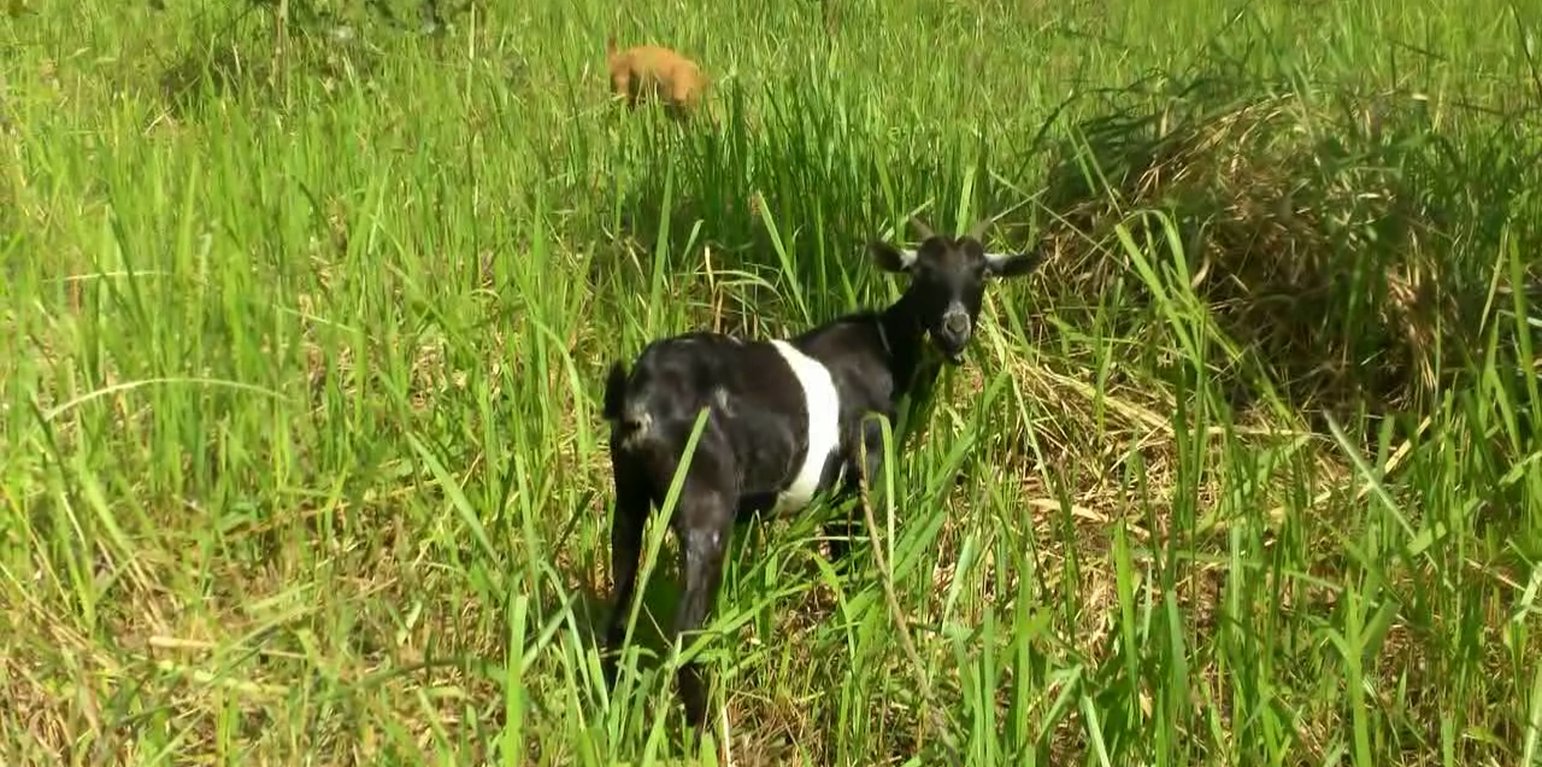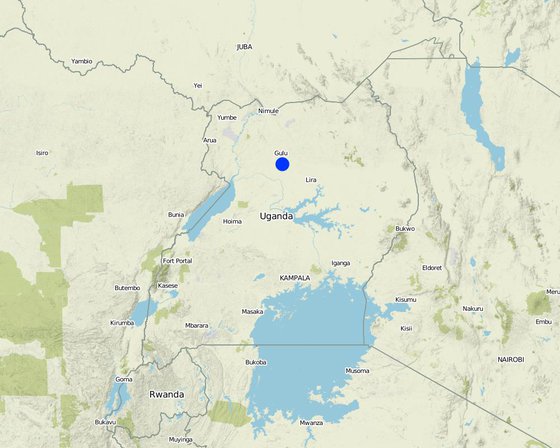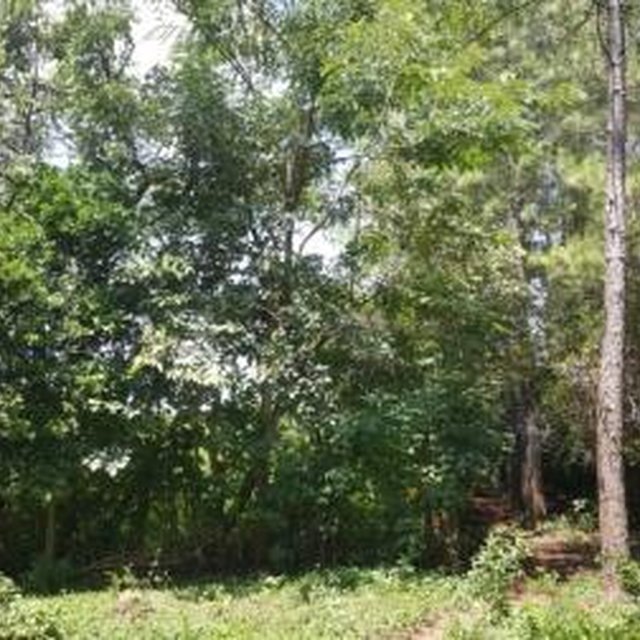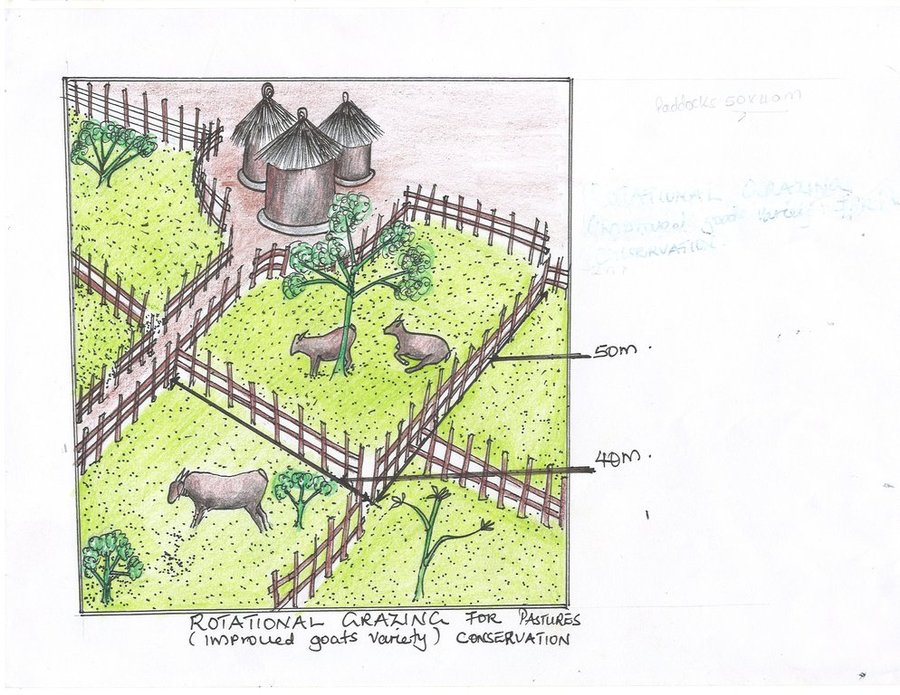



Rotational grazing is the shifting of livestock to different units of a pasture or range in regular sequence to permit the recovery and regrowth of the pasture plants after grazing, which increased forage production. Forage that are over-grazed or are less healthy from being grazed every few days have smaller root mass, which leads to less soil organic matter. Northern Uganda has tropical savannah climate characterized by moderate rainfall of 750-1000mm per annum. This region also experiences prolonged dry spells from June to July and also November to March characterised by wild fire outbreaks which retards pasture growth. Because of this, land user has to conserve pastures through rotational grazing in a paddock system. The land is gently sloping with moderate soil humus that has also supported the growth of pastures. The land user is a subsistence farmer who graze goat in a paddock system for pasture conservations, manure generation for cropland, and goats for home consumptions and sale. About 90% of his income is from on farm activities.
A well-managed controlled grazing program can increase quality forage production by 30-70% each year. Much of this increase in forage production is accomplished by minimizing overgrazing. In this technology, six paddocks were created measuring 40x50meters on a five acres’ piece of land. Goats are shifted from one paddock to another in an interval of one month and later shifted to another section. The water tank is also moved as the goats are shifted to another paddocks. The shifting is to reduce on overgrazing. The land user has 40 goats. Two paddocks are grazed at the same time with each having a carrying capacity of 20goats to minimize on overcrowding and congestion at the water point. controlled grazing is practiced in order to protect the area from the damages of grazing that is digging up roots and everything in the field since this will de-grass an area and make it susceptible for erosion. By limiting graze time, fields can produce all year round instead of being a one-time harvest. Goats are not allowed to graze a paddock until it is at least 10 to 12 inches in height. If grazed any shorter, this compromises root recovery, energy storage in the roots, and grass' ability to depend on photosynthesis alone. This is why the land user preferred rotational grazing to prevent overgrazing, and allow the forage plenty of time to recover.
The inputs needed for the establishment of this technology are pangas, hand hoes, slashers, poles, and labour force to carry out the work of paddock constructions. To main the technology, the over grown grass is slashed to a height of 10 to 12 inches in height which is consumable by goats, water point is cleaned every two weeks to avoid contamination, paddocks repaired and goats constantly checked for treatment
The technology provides beneficial impacts like improvement of organic matter content and pasture soil fertility as a result of spreading manure around the whole pasture while grazing and browsing. Grazing goats typically return to the water tanks or a single favourite shade tree. The manure deposited around water tanks/tree shade is collected and used as farmyard manure for the seasonal crop production like cereals, vegetables, and legumes.
The technology is disliked because it is tedious to look after so many goats, wild animal attacks and drought affects water supply and pasture growth for the goats.

Location: Omoro District., Northern Uganda., Uganda
No. of Technology sites analysed: single site
Spread of the Technology: evenly spread over an area (approx. 0.1-1 km2)
In a permanently protected area?:
Date of implementation: 2003; 10-50 years ago
Type of introduction


| Species | Count |
| cattle - non-dairy beef | 8 |
| goats | 40 |
| poultry | 50 |







Quantity before SLM: negative
Quantity after SLM: positive
Due to conserved pastures.
Quantity before SLM: negative
Quantity after SLM: positive
Source of water is secured by the land user.
Quantity before SLM: slightly negative
Quantity after SLM: very positive
Water filled in a tank for goats consumption.
Quantity before SLM: negative
Quantity after SLM: positive
Goats fenced off which avoid water contamination.
Quantity before SLM: negative
Quantity after SLM: positive
Rotational grazing has saved the land user from purchasing animal feeds which would be very expensive.
Quantity before SLM: negative
Quantity after SLM: very positive
Land user is aware of climate smart agriculture which has a lots of site benefits in terms of increased animal productions.
Quantity before SLM: very positive
Quantity after SLM: very negative
Grass cover the soil from effects of evaporation.
Quantity before SLM: negative
Quantity after SLM: positive
Grass covers the soil from erosion.
Quantity before SLM: slightly negative
Quantity after SLM: very positive
Grass covers the soil from being exposed to agents of erosion.
Quantity before SLM: very positive
Quantity after SLM: very negative
The grass covers the soil from erosion.
Quantity before SLM: very positive
Quantity after SLM: very negative
Grazing goats loosen the soil particles which helps in fertile soil formation.
Quantity before SLM: negative
Quantity after SLM: very positive
Dry grass decompose to form humus.
Quantity before SLM: negative
Quantity after SLM: positive
Different vegetation covers exist in the grazing fields.
Quantity before SLM: very positive
Quantity after SLM: very negative
Fire lines are created during dry seasons to prevent wildfire spread to the grazing fields.
Quantity before SLM: negative
Quantity after SLM: positive
Grass roots filters and purifies the surface water.
Quantity before SLM: positive
Quantity after SLM: negative
Goats are fenced off from crop land reducing unnecessary destruction.